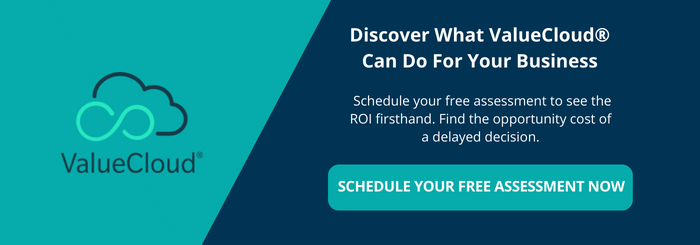Dynamic Value Messaging: The Problem of Not Having It and How to Get Started Part 2 of 2

By Tamara Schenk
Tamara Schenk is a Research Director for CSO Insights, Sales Enablement Leader, Author & Award-Winning Keynote Speaker
Using value messaging as part of a commitment to implement Customer Value Management can help sales leaders and sales professionals achieve quarter end or year-end goals for closing business.
This is part 2 of a 2-part blog series about the struggles sellers face with developing clear understanding of the buyers’ business problems and then effectively demonstrating customer value-based metrics to support the solution for putting everyone on the best path for ongoing growth and success.
Last week’s article “Dynamic Value Messaging: The Problem of Not Having It and How to Get Started Part 1 of 2”discussed the problem of not having dynamic value messaging for B2B companies. This week’s article now reveals the answer to the problem and how to get started with solving it for your company.
The answer is to implement a dynamic value messaging framework that leads to three things: to effective, targeted and tailored content, to sellers who are fluent in their value messaging approaches in various situations throughout the customer’s path, and to engaged buyers who are more likely to buy from you.
How do you get there? Below are five ideas to get started. But first, imagine value messages as the glue that holds your content assets consistent. That’s the foundation for any training and coaching effort.
#1: Clarify who owns value messaging, or understand the difference between marketing and sales messages.
Marketing often owns all value messaging efforts. As we live in the age of the customer, and their CX along the entire customer’s path is essential for their buying decisions, this “marketing only” approach no longer works. Additionally, there is a difference between marketing messages (broader audience) and sales messages (micro audience). A strategic sales enablement function that orchestrates all enablement efforts from content to training to coaching along the entire customer’s path is in a perfect position to own the value messaging approach. And marketing’s role is basically growing because of the broader scope along the entire customer’s path. Because the enablement teams must ensure that the value messaging is integrated in all content, relevant training and coaching services, it makes sense to have them orchestrating the process.
#2: Define the criteria that impact your value messaging types.
You should consider four types of value messages that are used at different phases of the customer’s path: value hypothesis, value messages, unique value messages and value confirmation messages. Now the question is what criteria impact these messages. Think about criteria such as the business challenges your products and services can solve. Then think about the relevant buyer roles and the different phases of the customer’s path. Think about the impact of different buying situations and their embedded risks (renewal vs. new problem to be solved) and your own position as a vendor (e.g., If you are a startup, you usually have to provide more value to cover the bigger risk).
Using the example of the case study, you would mainly look at the awareness phase of the customer’s path, the main problem your products and services can solve and the relevant buyer roles, such as a business leader, a finance role, a program manager, a technical buyer role and a procurement buyer role. One customer’s path phase, one problem to solve and five buyer roles require five tailored messages.
#3: Develop and implement a value messaging framework.
A framework is mandatory to gain scalability and efficiency. Imagine such a framework as a visual that helps you work backwards from the customer’s path and its main phases. As a mirror to that, imagine the different value messaging types we identified in #2. Now, for each phase, you can map all of your relevant content types. For instance, you have a customer-facing presentation per role, and you may have case studies, success stories and white papers, value calculation tools and diagnostic tools. You also might have enablement content such as playbooks, objection handling, competitive intelligence, configuration guidelines, etc. Such a framework also should show how these value messages can be connected and integrated in the relevant content, training and coaching services.
In sticking with the case study example, the framework would ensure that the relevant value messages exist for all relevant phases of the customer’s path (for this asset, it’s mainly the early buyer awareness phase) and the relevant buyer roles. Now enablement teams can take these messages and create several case study assets or – the smarter approach – create case study modules that can easily be assembled and tailored by sellers prior to a meeting.
#4: Creating targeted and tailored value messages requires leveraging lots of brains – and technology.
After the theoretical setup, it becomes very practical. How to get to these different buyer- and business problem-focused value messages? Ideally, have a neutral moderator leading the workshops. Choose one who is very familiar with such a dynamic value messaging approach. Have all functions involved, including marketing, sales (not only sales enablement, but also actual salespeople!), product management and customer success. Make sure the moderator leads the process from the buyers’ perspective, because nothing else matters. And of course, integrating the customers’ perspective first hand is the most beneficial way to do it.
Additionally, you should leverage the latest technology on customer value management that can help you provide the actual numbers that should go with your value messages, based on previous projects, actual cases or on models you have created for new services. Some technologies also are able to help create predefined content assets, as well as integrating actual customer experiences
#5: Enablement has to ensure a solid integration into enablement services to create consistency and enable performance.
Now the sales enablement team has a lot to do. It has to ensure that your case study assets and all other relevant content and training services are updated with the new value messaging. Ideally, they also create interactive playbooks that guide salespeople along the customer’s path with all of the messaging they need at their fingertips, including links to additional content to be used.
Effective sales enablement leaders don’t stop there. Instead, they ensure that their sellers are developed the right way, that they have enough practice and that the sales managers coach along those lines.

 ValueCloud
ValueCloud
.png?width=118&height=76&name=Rectangle%20(3).png) ValueCloud Ignite
ValueCloud Ignite
.png?width=92&height=92&name=Rectangle%20(4).png) Free Assessment
Free Assessment
.png?width=100&height=100&name=Rectangle%20(5).png) Watch a Demo
Watch a Demo
.png?width=82&height=96&name=Rectangle%20(6).png) Value Calculator
Value Calculator

.png?width=62&height=51&name=Group%2010%20(1).png) Marketing
Marketing
 Sales
Sales
 Customer Success
Customer Success
 Engage Prospects
Engage Prospects
 Win Deals Faster
Win Deals Faster
 Retain Customers
Retain Customers
.png?width=62&height=62&name=Rectangle%20(8).png) Adopt and Scale
Adopt and Scale
.png?width=54&height=54&name=Rectangle%20(9).png) Cybersecurity
Cybersecurity
 Healthcare
Healthcare
.png?width=54&height=54&name=Rectangle%20(10).png) IT & Software
IT & Software




